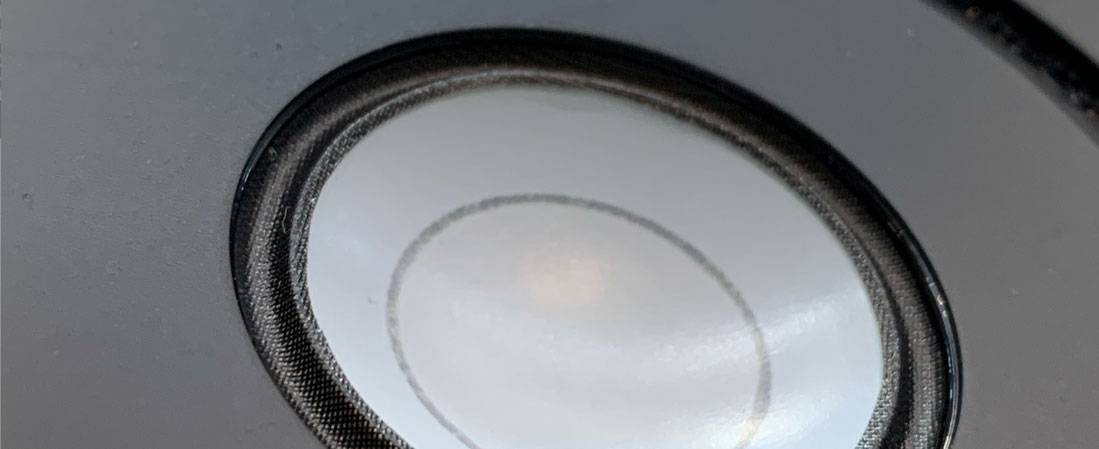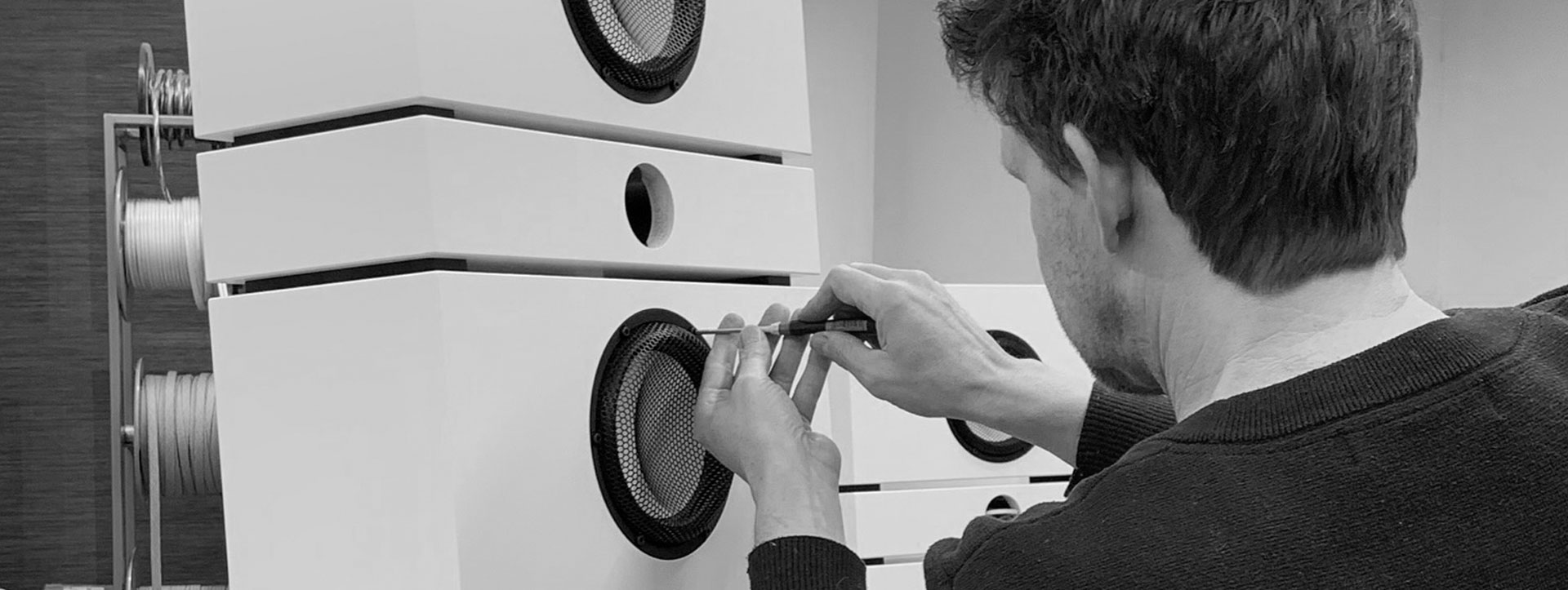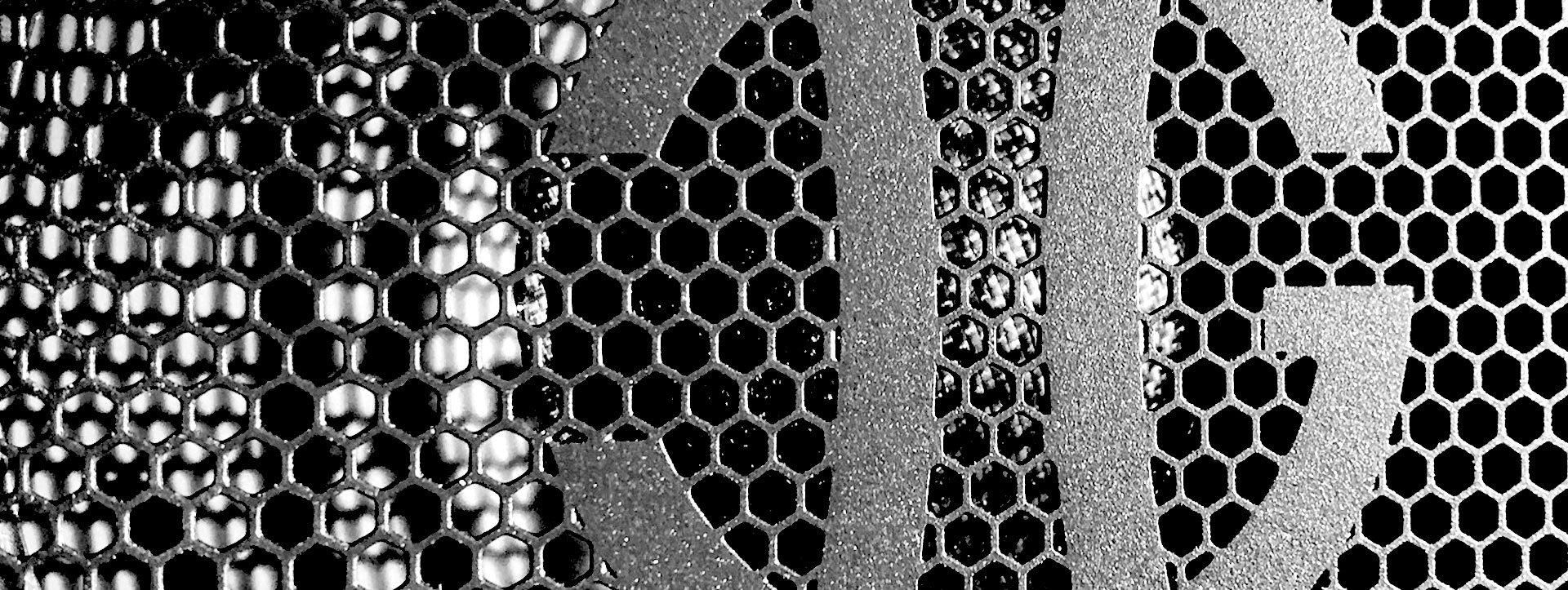
 The main ingredient of a superior audio system is not the quality of its components or the advancedness of its circuitry, it is the developer’s understanding of sound. The wealth and multiple dimensions of human aural perception, the endless complexities in the reproduction of natural sound and the nonlinear behaviour of electro-acoustical components all need to be understood, at least respected. Based on this understanding, the developer can determine the desired qualities of a system, the possibilities and ways to achieve them, and the choice of adequate components. This approach sounds obvious, but it still is an exception within the audio industry. The majority of products is either engineered for perfect measurements of standard parameters, centered around certain components that promise to deliver spectacular sonic results, or aimed at producing some kind of ‚impressive’ sound – in the worst case ‚crystal clear highs and powerful deep bass’ (Today’s marketing description of the sound of any audio gadget). For Lyravox, any product development begins with a differenciated vision of its sonic capabilities, to which the choice of components and their composition are means to an end.
The main ingredient of a superior audio system is not the quality of its components or the advancedness of its circuitry, it is the developer’s understanding of sound. The wealth and multiple dimensions of human aural perception, the endless complexities in the reproduction of natural sound and the nonlinear behaviour of electro-acoustical components all need to be understood, at least respected. Based on this understanding, the developer can determine the desired qualities of a system, the possibilities and ways to achieve them, and the choice of adequate components. This approach sounds obvious, but it still is an exception within the audio industry. The majority of products is either engineered for perfect measurements of standard parameters, centered around certain components that promise to deliver spectacular sonic results, or aimed at producing some kind of ‚impressive’ sound – in the worst case ‚crystal clear highs and powerful deep bass’ (Today’s marketing description of the sound of any audio gadget). For Lyravox, any product development begins with a differenciated vision of its sonic capabilities, to which the choice of components and their composition are means to an end.
2. Acoustics First
 Our approach to the ideal audio chain is simple: what the louspeaker is not able to deliver, no component in front of it can make up for. The consequence of this would be to only work with the world’s best speaker drivers. This is exactly what we do. We do not limit our choice to a certain type or make, as this would be counterproductive. It is typical for a Lyravox product to be outfitted with speaker drivers known from high end loudspeakers with a multiple price tag. On the other hand, some of the drivers we consider to be ideal for their purpose are neither common, nor brand new high tech developments, nor especially costly. Just like world cups are never won by teams who represent a bunch of superstars, but by teams who interact perfectly, it is the concept of teamwork, the perfect blend, that describes the acoustic side of a Lyravox system. But the acoustics don’t end here, the same attention goes into the geometry and materials of our cabinets, and – in the case of the Stereomaster range – even their interaction with the adjacent walls and the listening room. Wherever a sonic result can be achieved through acoustic measures instead of electrical manipulation, we rely on the acoustic option. For example the 180° listening field of the Stereomaster range is based on the traditional principle of the cross-angled tweeter. Stagewidth expansion is achieved through physical auxiliary side drivers and/or controlled reflections. Helmholtz-absorbers inside the speaker cabinets make electrical frequency corrections obsolete. Time-alignment of tweeters vs. bass drivers is mostly achieved through a physical recession instead of an electronic delay – etc…
Our approach to the ideal audio chain is simple: what the louspeaker is not able to deliver, no component in front of it can make up for. The consequence of this would be to only work with the world’s best speaker drivers. This is exactly what we do. We do not limit our choice to a certain type or make, as this would be counterproductive. It is typical for a Lyravox product to be outfitted with speaker drivers known from high end loudspeakers with a multiple price tag. On the other hand, some of the drivers we consider to be ideal for their purpose are neither common, nor brand new high tech developments, nor especially costly. Just like world cups are never won by teams who represent a bunch of superstars, but by teams who interact perfectly, it is the concept of teamwork, the perfect blend, that describes the acoustic side of a Lyravox system. But the acoustics don’t end here, the same attention goes into the geometry and materials of our cabinets, and – in the case of the Stereomaster range – even their interaction with the adjacent walls and the listening room. Wherever a sonic result can be achieved through acoustic measures instead of electrical manipulation, we rely on the acoustic option. For example the 180° listening field of the Stereomaster range is based on the traditional principle of the cross-angled tweeter. Stagewidth expansion is achieved through physical auxiliary side drivers and/or controlled reflections. Helmholtz-absorbers inside the speaker cabinets make electrical frequency corrections obsolete. Time-alignment of tweeters vs. bass drivers is mostly achieved through a physical recession instead of an electronic delay – etc…

3. The Lossless Chain
 What happens behind (or technically in front of) the loudspeakers, is chosen and engineered only to perfectly serve and drive the speakers as the actual sonic interface of our systems. In this domain, Lyravox follows another simple rule: nothing but a (good) cable must come between driver and amplifier. Speaker and amplifier must become one coherent unit. Lyravox systems are therefore multi-amped systems with individual power amplifiers driving each driver or driver group. This approach, using a powerful, multi-channel DSP (digital signal processor), not only frees the system from lossy physical crossovers between amplifier and speaker but also adds numerous tuning possibilities that a traditional audio system has to do without: super exact equalisation and filtering, time alignment, phase correction, advanced crossover setting. We compare this to switching from mechanic carburetors to a digital fuel injection management in a high performance sportscar engine. Using a DSP can also serve another goal: the realization of a wholistic system, including the avoidance of bottlenecks in the signal flow. Within all Lyravox systems, the DSP not only manages the powered speakers, it also takes over the digital signal processing of all audio sources. As such it is directly linked to any attached digital source. No speaker cables, plugs, interfaces or conversion stages can cause losses or mismatches, all of which can weigh heavy in a high end audio system. In contrast, all components within the speaker system can be matched to each other and tuned for perfect homogenity.
What happens behind (or technically in front of) the loudspeakers, is chosen and engineered only to perfectly serve and drive the speakers as the actual sonic interface of our systems. In this domain, Lyravox follows another simple rule: nothing but a (good) cable must come between driver and amplifier. Speaker and amplifier must become one coherent unit. Lyravox systems are therefore multi-amped systems with individual power amplifiers driving each driver or driver group. This approach, using a powerful, multi-channel DSP (digital signal processor), not only frees the system from lossy physical crossovers between amplifier and speaker but also adds numerous tuning possibilities that a traditional audio system has to do without: super exact equalisation and filtering, time alignment, phase correction, advanced crossover setting. We compare this to switching from mechanic carburetors to a digital fuel injection management in a high performance sportscar engine. Using a DSP can also serve another goal: the realization of a wholistic system, including the avoidance of bottlenecks in the signal flow. Within all Lyravox systems, the DSP not only manages the powered speakers, it also takes over the digital signal processing of all audio sources. As such it is directly linked to any attached digital source. No speaker cables, plugs, interfaces or conversion stages can cause losses or mismatches, all of which can weigh heavy in a high end audio system. In contrast, all components within the speaker system can be matched to each other and tuned for perfect homogenity.

4. No COMPROMISE
 The wholistic approach would not be worthwhile if the integratable components were inferior to the best traditional components. After extensive cross-comparison with a number of undisputed reference components, it turned out that the latest generation of integratable amplification (so called ‚Class D’ modules) even surpasses many heavy-weight references in both sound quality, electrical properties, and reliability – not to mention efficiency. Only this recent breakthrough made the development of integrated loudspeaker systems possible. We are not surprised to find our internal amplifiers inside some esoteric pieces of contemporary ultra high end audio equipment. Even the few remaining inches of internal cabling inside our speakers could serve as audiophile status symbols – if they could ever be seen.
The wholistic approach would not be worthwhile if the integratable components were inferior to the best traditional components. After extensive cross-comparison with a number of undisputed reference components, it turned out that the latest generation of integratable amplification (so called ‚Class D’ modules) even surpasses many heavy-weight references in both sound quality, electrical properties, and reliability – not to mention efficiency. Only this recent breakthrough made the development of integrated loudspeaker systems possible. We are not surprised to find our internal amplifiers inside some esoteric pieces of contemporary ultra high end audio equipment. Even the few remaining inches of internal cabling inside our speakers could serve as audiophile status symbols – if they could ever be seen.

5. No Dogma
 HiFi enthusiasts may wonder where to locate the components and technology of the Lyravox systems. As mentioned above, the pool of technologies and approaches that Lyravox distillates its wholistic systems from, is barely limited. Our heritage includes all kinds of technologies. When vacuum tubes where the component of choice to achieve transparent, colourful and perfectly articulated sound, we used them. When dynamics were the prime requirement of a system, we used horn speakers. When homogenity and imaging were key, we created fullrange driver systems. When airy transparency had priority, we chose electrostatic or magnetostatic transducers. And so on. In the history of High Fidelity many different technical concepts had their place, because for certain sonic virtues they could not be substituted. Even today, the ‚perfect’ loudspeaker (or system) that could replace any other, does not exist. But the improved quality of today’s components and the recent advances of technology make it possible to create a system that would not leave an enthusiast for a certain audiophonic virtue missing anything. We can tell, because all sorts of sonic preferences are represented within the Lyravox team. And none of us would trade their Lyravox system for anything else anymore.
HiFi enthusiasts may wonder where to locate the components and technology of the Lyravox systems. As mentioned above, the pool of technologies and approaches that Lyravox distillates its wholistic systems from, is barely limited. Our heritage includes all kinds of technologies. When vacuum tubes where the component of choice to achieve transparent, colourful and perfectly articulated sound, we used them. When dynamics were the prime requirement of a system, we used horn speakers. When homogenity and imaging were key, we created fullrange driver systems. When airy transparency had priority, we chose electrostatic or magnetostatic transducers. And so on. In the history of High Fidelity many different technical concepts had their place, because for certain sonic virtues they could not be substituted. Even today, the ‚perfect’ loudspeaker (or system) that could replace any other, does not exist. But the improved quality of today’s components and the recent advances of technology make it possible to create a system that would not leave an enthusiast for a certain audiophonic virtue missing anything. We can tell, because all sorts of sonic preferences are represented within the Lyravox team. And none of us would trade their Lyravox system for anything else anymore.
6. Maturity
 No legendary audio component or system (typically known for making its owners happy) has been created on the drawing board or by a simple cross-check of its calculated engineering. A succesful design with the potential to convey audible magic has to be carefully and painstakingly elaborated, then tuned, and finally intonated. Such a development taking several years should be regarded norm, not exception. Needless to say, mastering such a process requires the experience of many such development cycles.
No legendary audio component or system (typically known for making its owners happy) has been created on the drawing board or by a simple cross-check of its calculated engineering. A succesful design with the potential to convey audible magic has to be carefully and painstakingly elaborated, then tuned, and finally intonated. Such a development taking several years should be regarded norm, not exception. Needless to say, mastering such a process requires the experience of many such development cycles.

7. Love, Passion & Craft
The individual handcrafting of each system we build gives every unit an identity that industrially made products cannot have. The production process is closer to that of a musical instrument than to that of a piece of consumer electronics. We appreciate it when a client visits our workshop to chose the very sheet of veneer that becomes the face of his or her personal audio system. We feel that the love, passion and craft that we put into a Lyravox system, is being taken home along with it.

